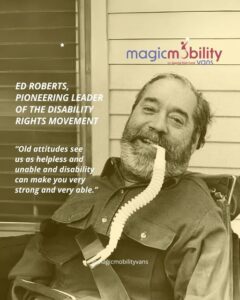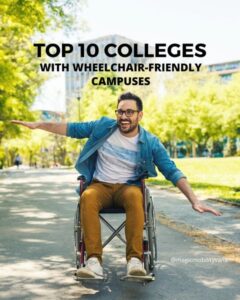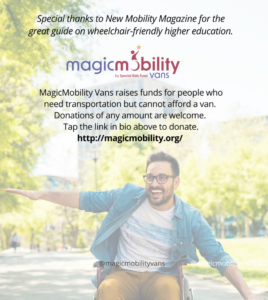Know your American Disability Act students rights when planning for college and postsecondary education.
It’s August! That means it’s Back To School Time!
Do you know the changes in legal rights and accommodations for students with disabilities when transitioning from high school to college or postsecondary schools?
While Section 504 and Title II protect against discrimination at all educational levels, specific requirements differ. High schools provide a free appropriate public education (FAPE), identifying and meeting the educational needs of students with disabilities.
However, postsecondary institutions are NOT required to provide FAPE, but must offer academic adjustments to prevent discrimination. These may include priority registration, reduced course loads, and auxiliary aids.
Unlike in high school, postsecondary students must voluntarily disclose their disabilities to receive adjustments, so plan ahead if you intend to.
Postsecondary schools must also offer accessible housing at the same cost if they provide housing to nondisabled students. Admissions cannot be denied based on disability.
You can visit the ADA National Network’s website to learn more about your specific legal rights as a student with a disability.
We celebrate students like Anja Herrman for her courage to embrace new adventures
Anja is a soon to be college freshman and is excited about preparing for this new and exciting challenge. She says:
“College will likely bring new challenges, and not only do I feel ready for them, I also welcome them. As a disabled person, I always adapt to have space in the world.”
She proves that she’s open to all the possibilities her college experience can bring. We can’t wait to see what she’ll achieve.
Ed Roberts was the first wheelchair user to attend the University of CA Berkeley

Ed was a pioneering leader of the disability rights movement.
He said:
“Old attitudes see us as helpless and unable and disability can make you very strong and very able.”
Ed worked tirelessly to advance the rights and opportunities of people with disabilities, inspiring generations and gaining equality and accessibility for all.
Born in 1939 and paralyzed at age 14, Ed was the 1st wheelchair user to attend the University of CA Berkeley where he earned both bachelor’s and master’s degrees in political science.
Co-founder of the Center for Independent Living at Berkeley, he helped pass Section 504 of the Rehabilitation Act of 1973.
The impact of Ed Roberts’s life and work has touched countless lives, and his legacy lives on.
Top Ten Colleges With Wheelchair-Friendly Campuses

New Mobility Magazine has a great guide on wheelchair-friendly higher education.
Here is the list of top 10 wheelchair-friendly colleges in the US, According to the magazine.
These schools rank highest for accessibility and a welcoming culture for wheelchair-users.
Each school is listed with their student-to-faculty ratio.
1. University of Illinois, 20:1
2. University of CA Berkeley, 18:1
3. Wright State University (Ohio), 14:1
4. University of Arizona, 15:1
5. University of Wisconsin, 20:1
6. CA State Univ Northridge, 27:1
7. University of Florida, 18:1
8. Ball State University (Indiana), 17:1
9. University of Washington, 19:1
10. Auburn University (Alabama), 19:1
Each school has a Disability Services Office that assists with the needs of students, as well as many inclusive opportunities and programs open to wheelchair users.
If you are a wheelchair user, visit our website to learn more about our wheelchair van donation program.

MagicMobility Vans raises funds for people who need transportation but cannot afford a van.
Donations of any amount are welcome!


